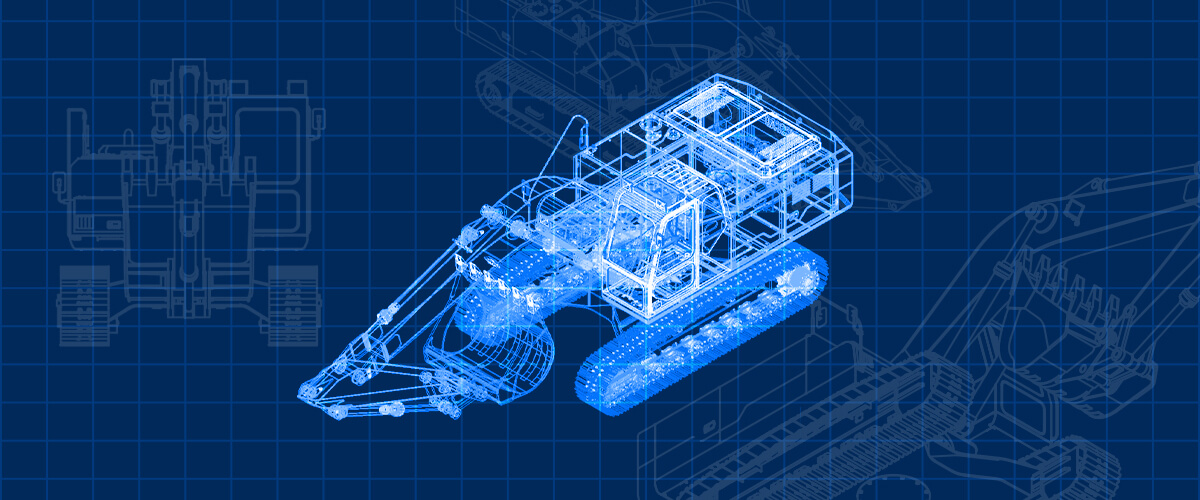Isometric drawing is a particular drawing style where the angle between the x, y, and z axes are all 120°, and there is no perspective. An isometric drawing is a pictorial representation of an object in which all three dimensions are drawn at full scale. It is a type of 3D drawing that uses a 3D representation, but the angles between the axes are always 120 degrees and the proportions are maintained, giving the illusion of depth and space. This type of drawing is commonly used in engineering, architecture, and design to represent objects and structures that have a fixed position and are not intended to be seen from multiple angles.
We technical illustrators use isometric drawing every day, but how often have you stopped to think about where it came from or why we use it?

Examples of different drawing styles
Isometric drawing comes from the greek ίσο μέτρο "íso metro," meaning equal measure. This is because the angle between the x, y, and z axes are all 120°. It's a form of axonometric perspective (there is no foreshortening). In other words, a face’s lines are all drawn at the same angle.
The advantage of drawing in this manner is that an object can be freely rotated, re-positioned, and reoriented without redrawing it. There is also no change in the sense of scale when an object is moved forward or backward. With other drawing techniques such as perspective, oblique, plan, or diametric views, it is impossible to reuse already drawn items. They will need to be re-drawn from scratch.

In BricsCAD, the LookFrom widget automatically aligns any drawing to an isometric view, so long as the perspective value is set to 'off' <0>. You can also automatically generate isometric views using the drawing command VIEWBASE. Use the Properties panel to change the lens angle in the perspective view.

Comparison of isometric and perspective views. Note that the isometric object remains the same regardless of its position in the drawing.
History of Isometric Drawing
Professor William Farish, Cambridge University, was the first to set down the rules for isometric drawing when he published his paper: 'On Isometric Perspective,’ in 1822. For this reason, he is often quoted as the creator of isometric illustration. However, isometric and axonometric drawings were commonplace long before this. The technique is usually found in ancient Chinese art. Along the River During the Qingming Festival is a famous example of such.

An ancient example of Axonometric drawing. Note that the change in scale gives a sense of perspective; however, the angle of the faces remains the same. This results in some interesting distortion on the boats. Zhang Zeduan, "Qingming shanghe to.” Fu Ximian, ed. Zhongguo meishu quanji, Liang Song huihua, shang (Series Vol. 3). pl. 51, pp.130-131, 134. Collection of the National Palace Museum, Beijing. Edited for color and contrast.
The most recent and noteworthy adoption of isometric drawing can be traced to the Bauhaus, as with much of modern design and architecture. Theo van Doesburg and Herbert Bayer famously use axonometric perspective in their architectural drawings. This was somewhat shocking to the architectural world at the time and is still not typical of architectural drawing today. The lack of perspective transforms concept drawings into modernist works of art in their own right.

Axonometric projection in color, Private House, 1923.
Problems
While Isometric drawing might mean it's easy to rework drawings quickly. The problem with isometric illustration is that, without a sense of perspective, the object might appear in a different location from where it is. This can make working in CAD difficult!

It can be advantageous to use a perspective view during CAD modeling, as it allows the CAD user to view 3 of any four walls and the floor and ceiling of a room simultaneously. In isometric and axonometric opinions, it is only possible to view 2 of the four walls and either the floor or the ceiling.

Left: Pure isometric view. Only 3 of the six faces of a given room are visible—right: Perspective view. Simultaneously see three sides, the floor, and the ceiling of a given room.
Not just line drawing
You'd be wrong if you thought that isometric drawing was limited to black-and-white line drawing!
Video games frequently use isometric perspective as it allows game designers to use 3D design in games without calculating complex calculations, foreshortening, and different camera view angles. With 8 and 16-bit graphic games, this was extremely important. As consoles improved, games where the player requires an overall view of the playing space, like The Sims and Age of Empires, utilized isometric views.

Image credit: BagoGames
With the introduction of higher-capacity game consoles, this became less common. However, the isometric view style has recently seen something of a revival in mobile devices. Many of you will be familiar with FarmVille. Mobile games often use this style because isometrically drawn objects are simpler to create, use less computing power, and have less battery. Higher-end-console games, such as Shadowrun and Invisible Inc. use a pseudo-isometric view to make them stand out stylistically.
There are also an increasing number of artists that use isometric drawings to create innovative and exciting artwork. They create modern drawings that leave the lines behind.

Image Credit: German Kopytkov
Want to use the Power of BricsCAD for your isometric drawings?
Easy to try, easy to buy, and easy to own. That's BricsCAD. Try all of our products for free for 30 days at www.bricsys.com. Freedom of choice, plus perpetual (permanent) product licenses that work with all languages in all places. You'll love what we've built for you with BricsCAD.
Isometric Drawing
Isometric drawing comes from the greek ίσο μέτρο "íso metro," meaning equal measure. There is no foreshortening in the drawing. Professor William Farish, Cambridge, was the first to set down the rules for isometric drawings in 1822. Use isometric to rotate freely, re-positioned, and reorient without redrawing. Without perspective, an object might appear in a different location than the one you first thought about. Isometric drawing is also used widely in video games and modern illustration.
Explore
Download BricsCAD Free Trial | Sign Up For News & Updates | Shop Online For BricsCAD Desktop Software


